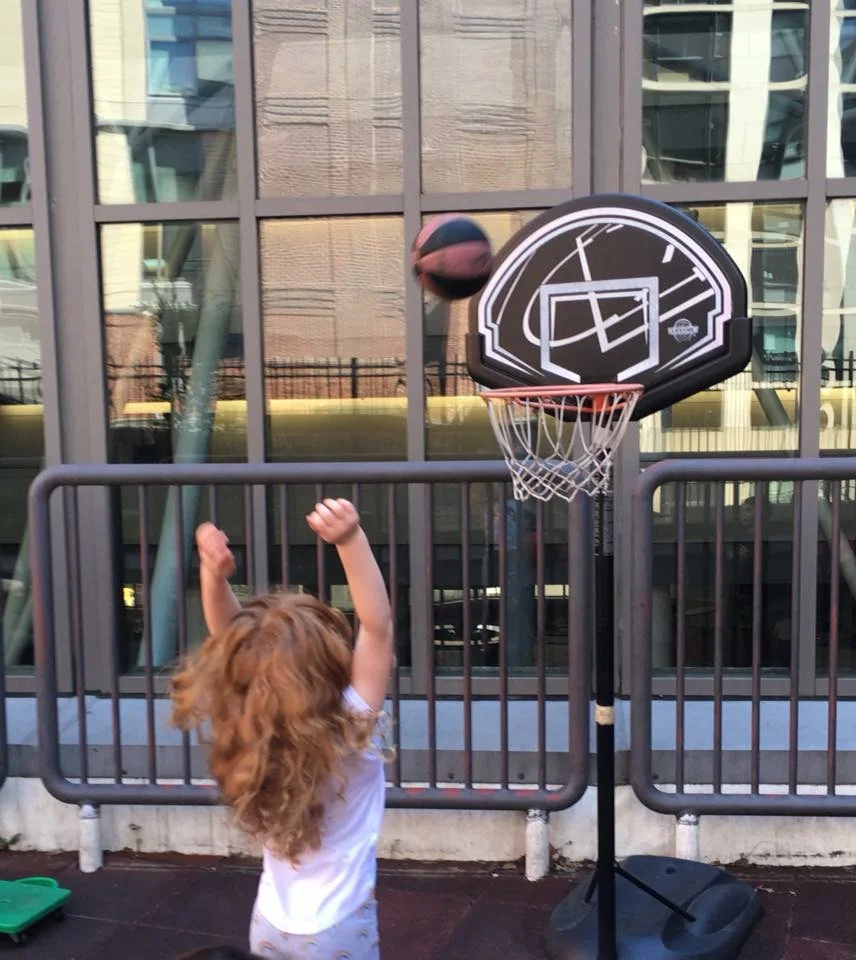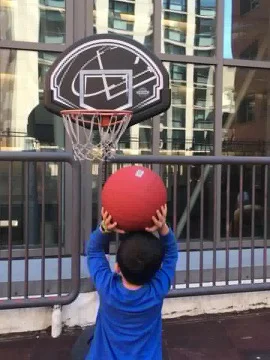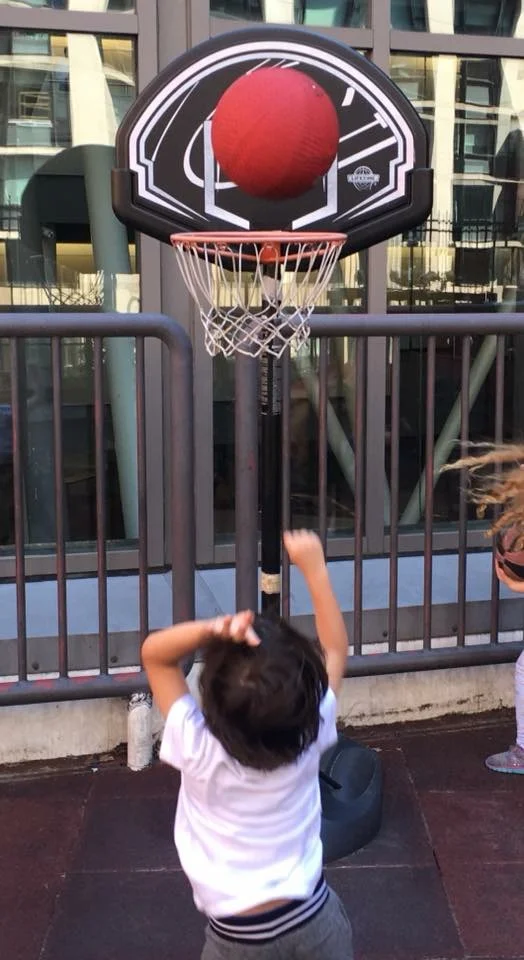Basketball Can Be Incorporated Into All Aspects of Preschool Curriculum
Whole your preschool students most likely won’t become the next Jayson Tatum, Giannis Antetokounmpo, or Elena Delle Donne , basketball related lesson plans are still a great way for children to learn math and science concepts while using their gross motor skills and building their vocabulary.
Here are some examples of simple lesson plans based around basketball.
Most basketball hoops for young children whether they be the plastic or metal variety are adjustable in height. This provides a potential activity. Children can help measure and document all the different heights of these adjustable basketball hoops. This can be done with more traditional measuring tools like tape measures, rulers, and yard sticks but also non standard units of measurement such as connecting Unifix Cubes to measure the hoops height.
This is not the only time you can bring in measuring tools into basketball lessons. Children can learn about free throw lines and three point lines and decide how far away these lines should be for their basketball hoop. Again both standard and non standard measuring tools can be used to measure how far away the lines are and the lines can be marked off with chalk outside or tape inside.
This leads to the next math and data collection concept. Making a chart of how many made and missed shots the children have. You can initially make these charts for these charts for the children to show them how they can be done but after a while or demonstrating you can let the children make their own data collection charts either inside on paper or a blackboard or outside on the ground or wall using chalk. This is both a data collection and counting activity. Children can even compare how many shots they make and miss when the hoop as it different heights and different distances.
Another thing you can collect data on and explore scientifically is different kinds of balls. Children can play with traditional large basketballs, mini basketballs, kick balls, bouncy balls, soccer balls and compare how each balls have different properties. You can discuss things like which balls weigh more, which ones bounce higher, and which ones are easier or harder to shoot into the basket.
Vocabulary specific to basketball like foul, dribbling, slam dunk and more can be discussed while playing the games. Reading books on basketball like the recently released B is for Baller and watching highlights of basketball games can deeper children’s knowledge. When showing video clips, make sure to include NBA and WNBA clips. These clips can be used to inspire activities.
After once showing my students a YouTube clip of high lights from every Slam Dunk contest the children wanted to have one of their own so we lowered the hoop to as low as possible and the kids tried different dunks.
You can also follow local basketball teams and make charts of their wins and losses. A field trip to watch a local college game or inviting local college basketball players to come to the school can add to the basketball curriculum. In March, children can help fill out a March madness style bracket ( with no money being exchanged of course) and watch as the brackets fill up.
But along with all this mildly structured leading, it is important to give the children plenty of opportunity to play basketball in a more free for all style with the only rules involving safety which builds their gross motor skills.










